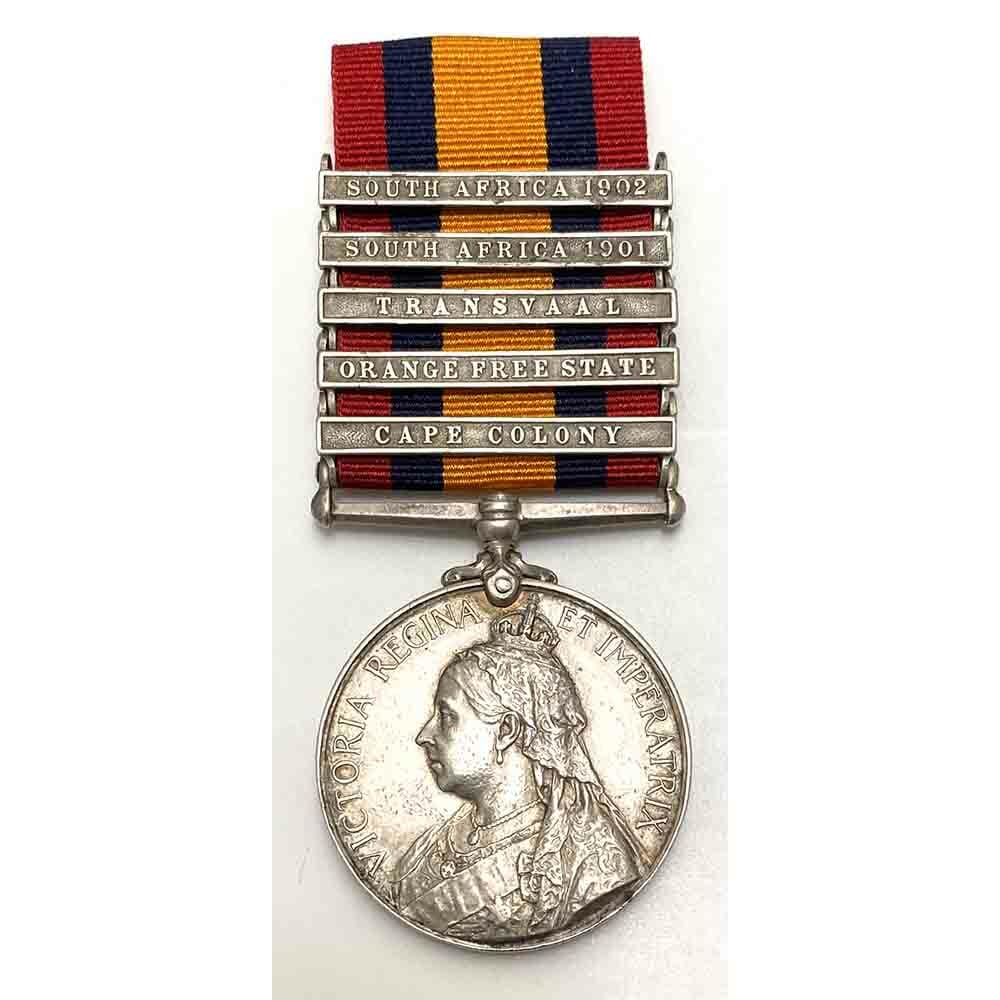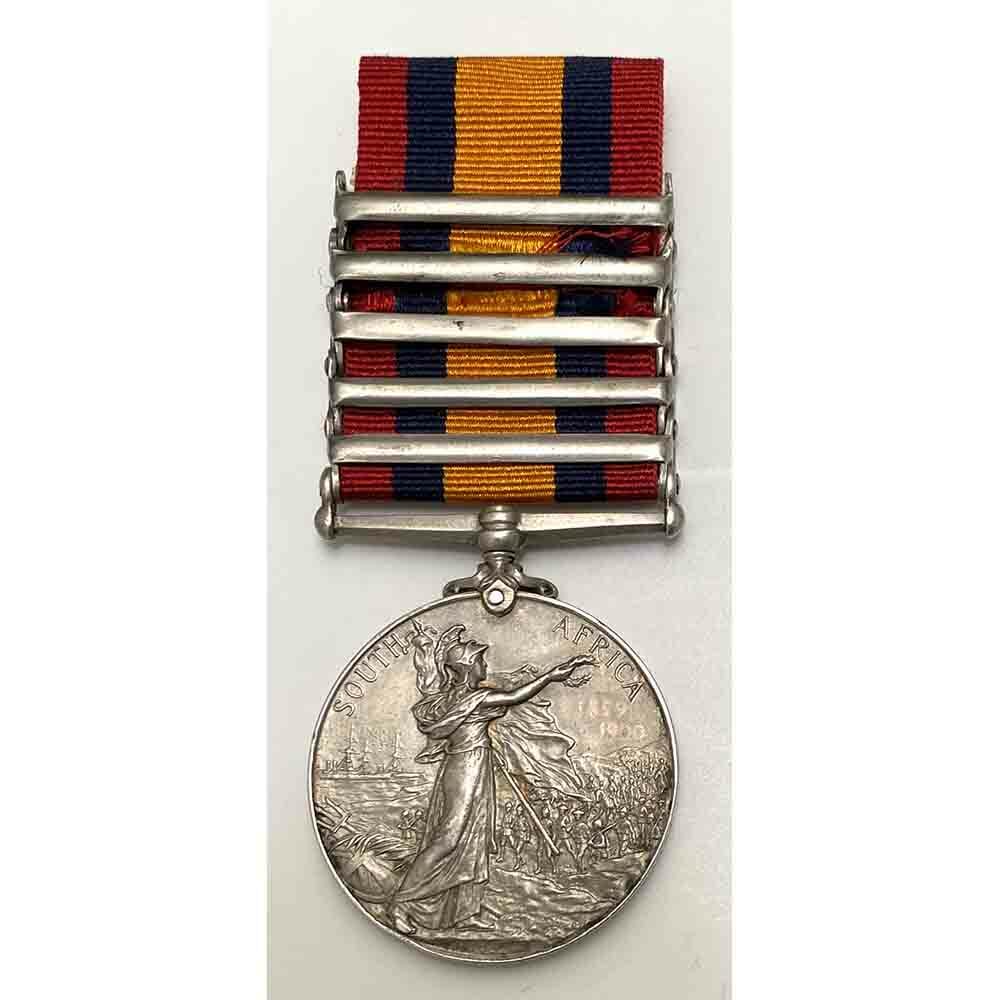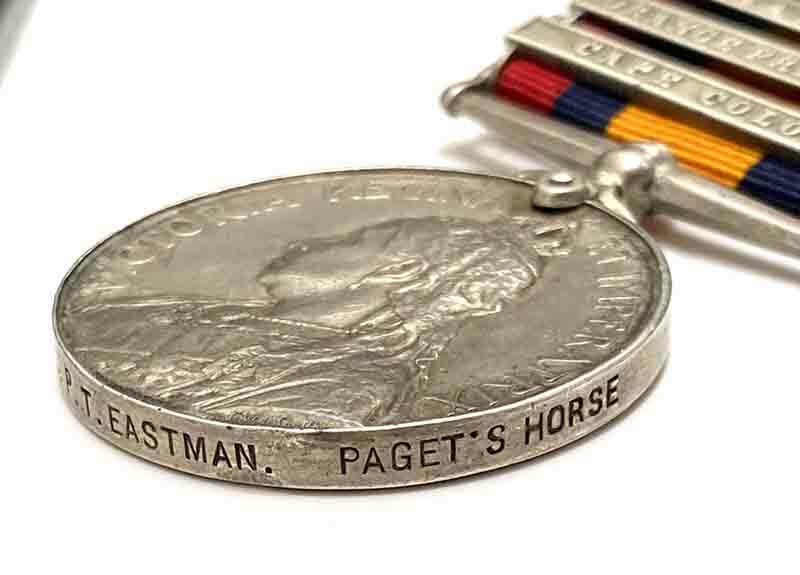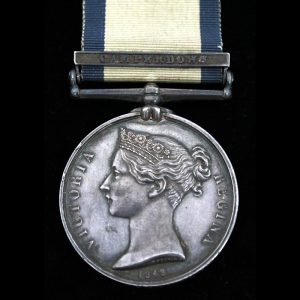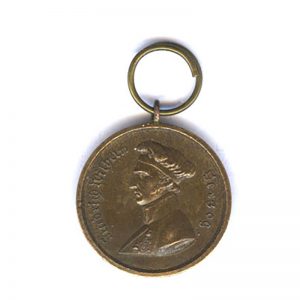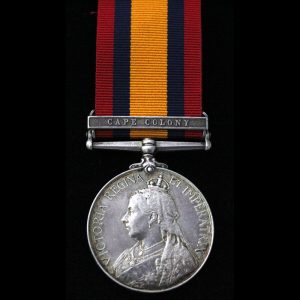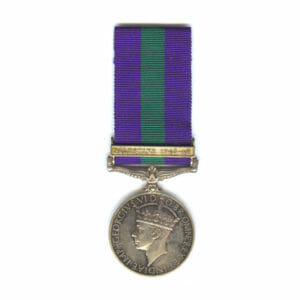Description
Queen’s South Africa Medal, 5 bars, Cape Colony, Orange Free State, Transvaal, South Africa 1901, South Africa 1902, 13527 Lance Corporal P.T. Eastman Paget’s Horse.
Extremely rare medal named to Paget’s Horse.
Naming officially re-impressed as previously seen to unit, as they are a unit of the Imperial Yeomanry and the medals were not usually named to the individual units of the I.Y.
It reads: “13527 Lance-Corpl: P.T. Eastman. Paget’s Horse.”
Paget’s Horse was the 51st (Paget’s Horse) Company of the 12th Battalion Imperial Yeomanry, the medals are usually named “51st Coy Imp Yeo” but they were also made up of 4 separate companies of the Imperial Yeomanry, with Eastman serving in at least 3 of them, he was also in the 52nd and 73rd Company also Paget’s Horse, being Squadron Quartermaster Sergeant of the 52nd Company.
The medal roll shows when the medal was issued on 7th January 1902, he was listed as the 51st Company’s Regimental Quartermaster Sergeant.
Percy Thomas Eastman was born during 1871 in St Pauls, Maidstone, Kent, he attested for service with the Imperial Yeomanry on 21st March 1900, he was a Saddler by trade for many years, having been an Apprentice to a Saddler, he specifically requested to serve in Paget’s Horse Imperial Yeomanry, which was granted. He was later discharged on 23rd October 1901, being unusually entitled according to the roll for the South Africa 1902 bar as confirmed on the roll, having possibly seen further service in a Colonial Unit.
Following his discharge in South Africa he remained there for many years afterwards, having joindd
e the United Lodge of Freemasons at Johannesburg on 21st October 1917.
In later life he returned to Kent, and seemingly became an Antiques Dealer for many years at Tudor House, Palace Street, Canterbury.
He died in Canterbury on 30th May 1940.
